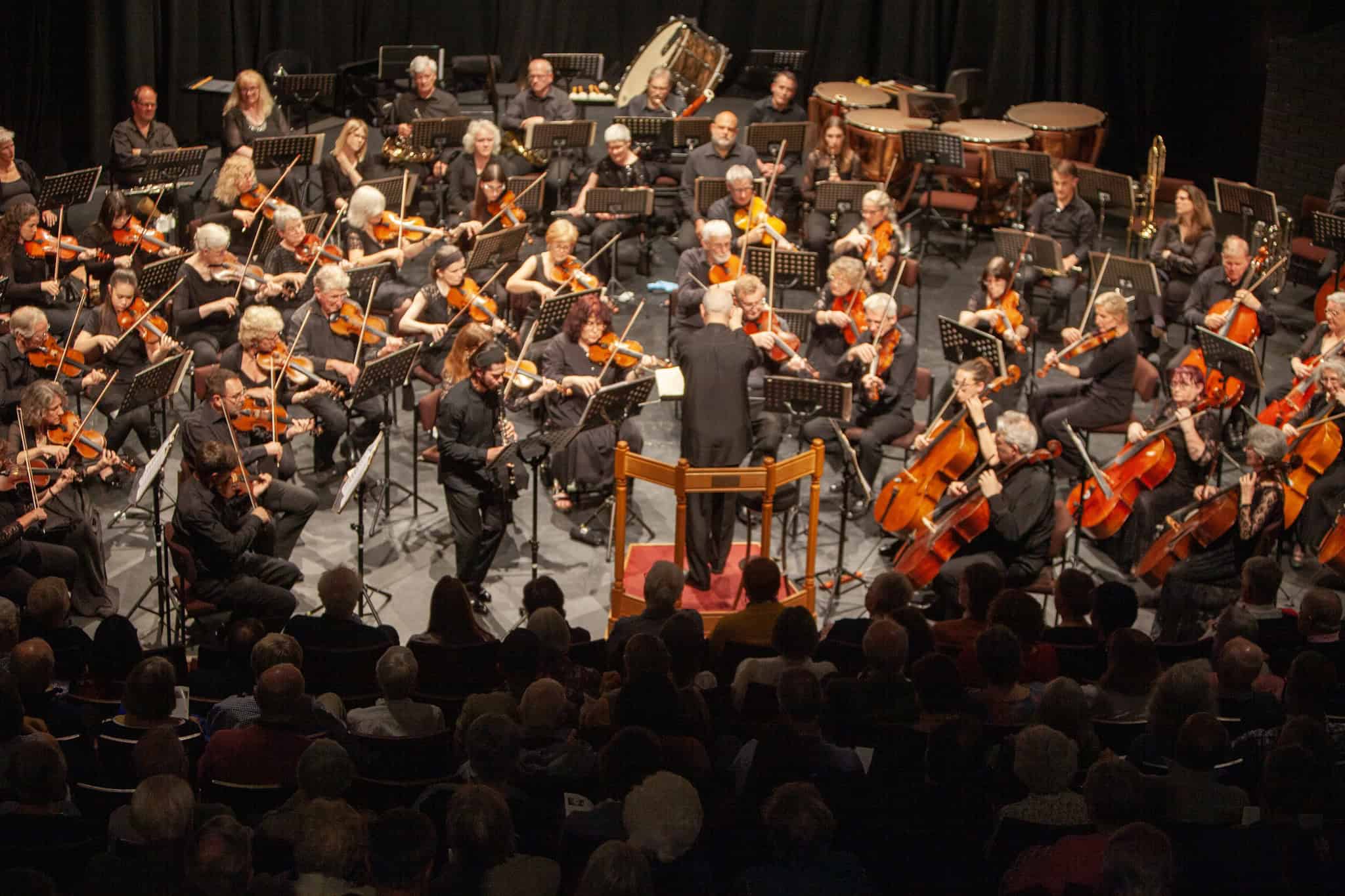Jonathan Dodd shares his review of the latest Isle of Wight Symphony Orchestra (IWSO) concert. Images with kind permission of Allan Marsh. Ed
The faithful supporters of the Isle of Wight Symphony Orchestra assembled at the Medina Theatre last Saturday, 18th May, on an unusually balmy evening for the fourth concert of the 2023-2024 programme.
We had heard rumours of an outstanding Ukrainian clarinettist. There were unheard pieces to listen to, and a big Russian symphony. The weather was good, and there was expectation and the scent of summer approaching. It was going to be a wonderful evening.
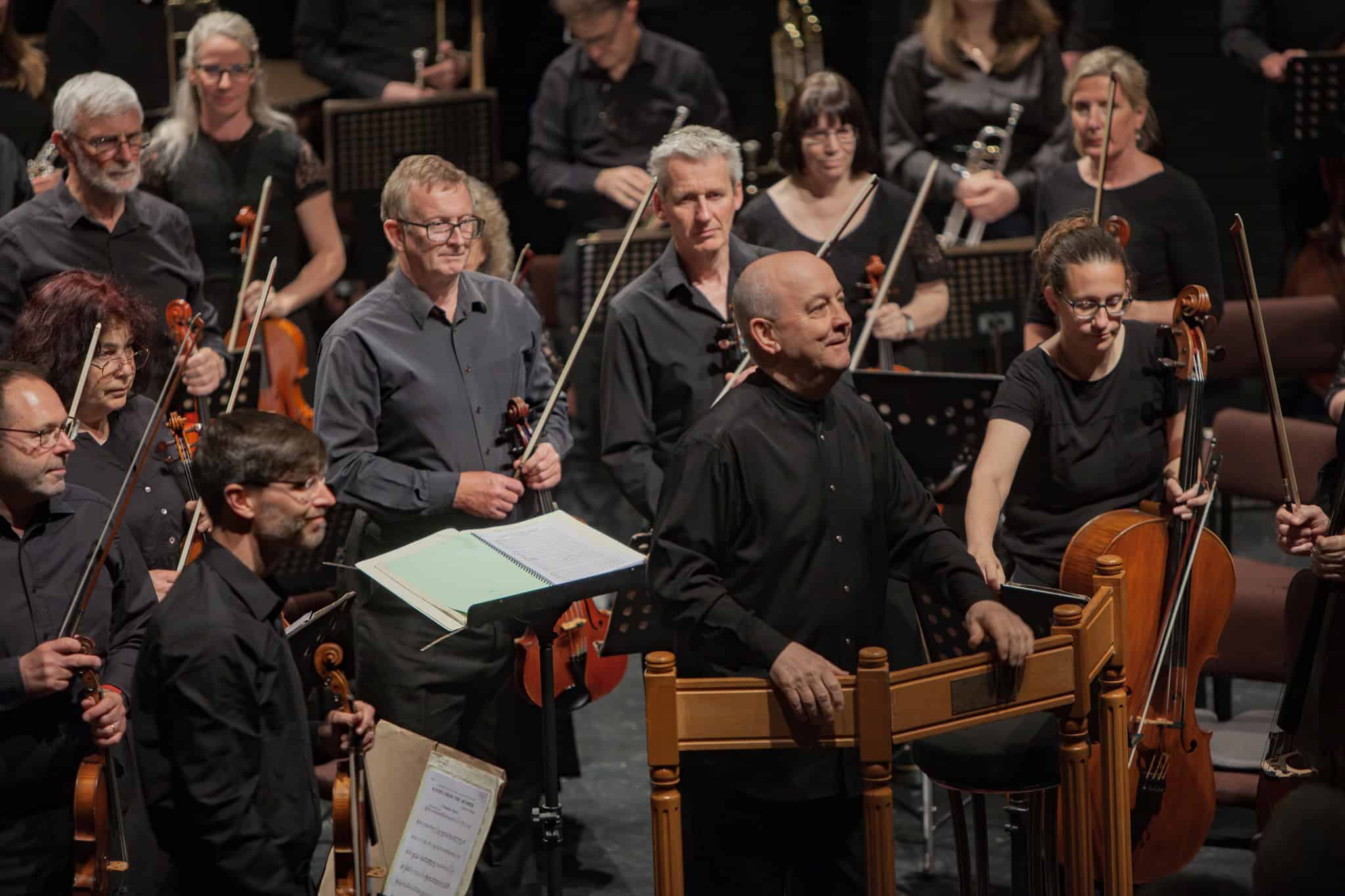
Humber scenes
Mr Jonathan Butcher, our resident conductor, introduced the first piece, Scenes from the Humber, by Anthony Hedges. He spoke of the thin line of distinction between Classical Music and Light Music, and how much so-called Light Music has great value. He was introduced to this piece, commissioned for the opening of the Humber Bridge in 1981, by an orchestra member, and liked it so much that it was added to the programme.
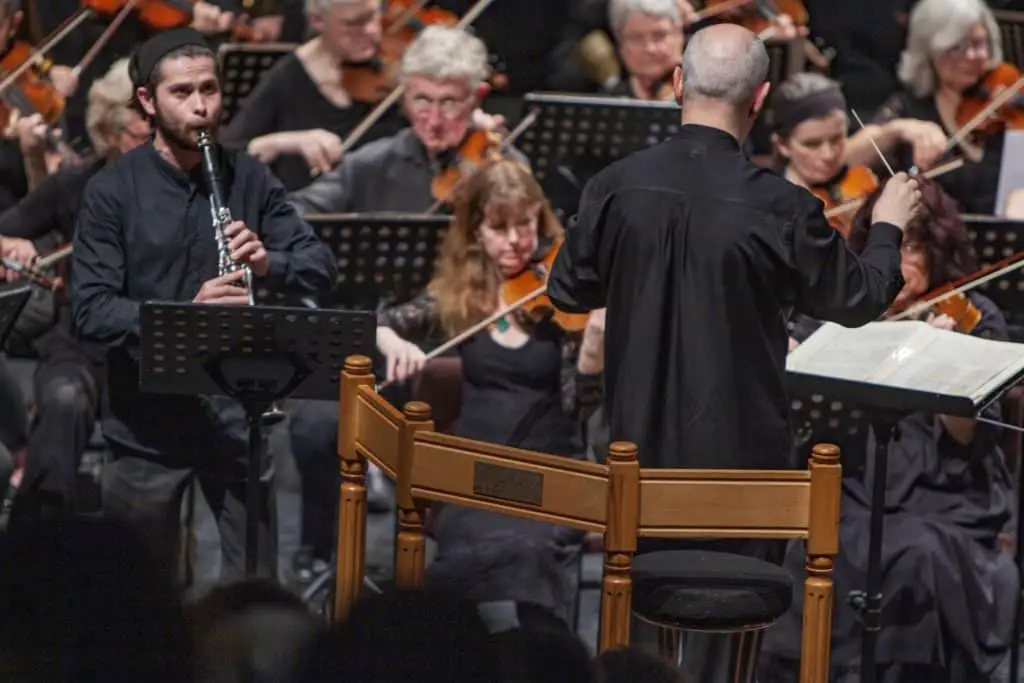
From the opening of its first part, with a snare drum and horns featuring, and its strong and evocative melodies, it summons a sense of mystery and power, and evoked the idea of a great river meeting the sea, and the passing of a great deal of time since the first crossing of the estuary.
The second part was inspired by the wild desolation of the extraordinary Spurn Point, a sand bank and wildlife haven that juts out into the North Sea. This was followed by a lively musical tribute to the Lincoln Castle, a paddle steamer that used to ply a route across the Humber, and was replaced by the new bridge. Finally, the Humber Keels, square-rigged barges were celebrated, busily moving cargo from point to point in the estuary. This was instantly likeable and enjoyable music, written for an event in an actual place, and celebrating the history and culture of that place in an imaginative and memorable way. I loved it.
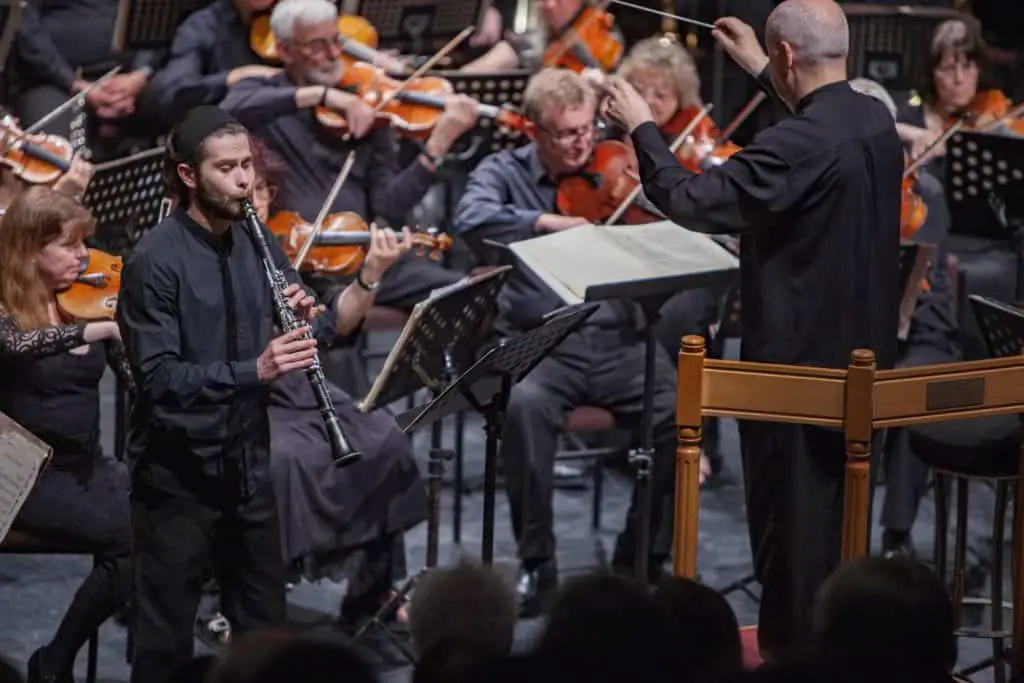
Weber Concertino
After some reorganisation, the clarinet soloist Dmytro Fornariuk took to the stage to play the first of two pieces, the Concertino in E-flat by Carl Maria von Weber. Written in 1811 for a famous clarinettist of the time, it was very successful, and shows off the full range of the clarinet. It’s a formal piece, very Classical, with the orchestra making statements and the clarinet responding and completing each section. I’m familiar with Mozart’s clarinet music, and it felt very much at home in that genre. Mr Fonariuk cut an engaging figure, as he bobbed and swooped his body to emphasise his playing, and he had a broad smile whenever he wasn’t playing the many notes that his fingers effortlessly produces. It was mesmerising, and very enjoyable. He received very enthusiastic applause at the end.
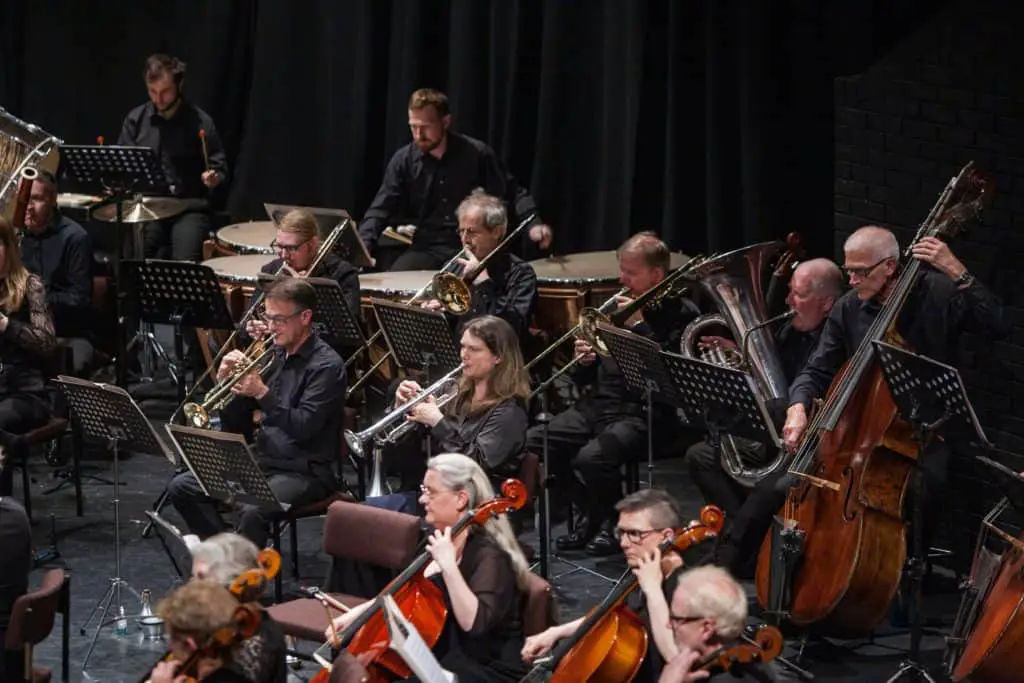
Bare Mountain
I imagine everyone in the world must have heard Night on the Bare Mountain at some point in their lives, so it wasn’t a surprise. But for me it was the first time I had witnessed it performed live, and it brought Modest Mussorgsky’s wild musical epic to life in a grand way. It was first played in 1867, but wasn’t a success. After he died in 1881, his friend Rimsky-Korsakov rewrote it, lessening the savagery and introducing a lighter ending, and it became a much-loved standard.
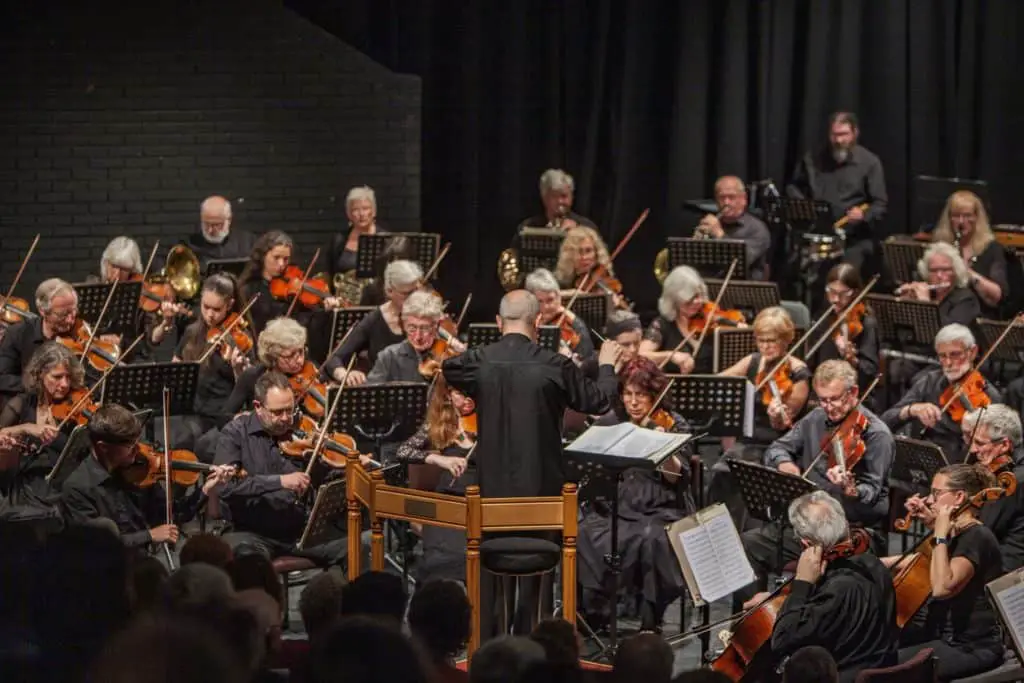
The first part starts with vigorous string-sawing and the foreboding basses and cellos, with the brass section blaring, and lots of crescendos and sudden stops. It’s thrilling, and very powerful with a full orchestra going at it full-tilt. The four parts, starting with inhuman voices wailing, then the appearance of Satan, followed by a black mass and finishing with a witches’ sabbath, follow each other in a wild and powerful dance of huge energy and memorable music, with great variations in volume and speed and tone. I loved watching it as well as listening, and I felt exhausted at the end, although the players must have been much more affected. I salute their efforts and self-sacrifice, and I salute their dedication and sheer hard work.

Introduction, Theme and Variations
After the interval, Mr Fornariuk returned, to play The Introduction, Theme and Variations for Clarinet, by Gioachino Rossini, written, remarkably, in 1809, when he was only 18 years old. This piece also has the feel of the same period as the previous piece, but with more drama and flourishes. It’s ideally suited to show off the clarinet’s virtuosity, trilling and skipping through a huge number and range of notes.
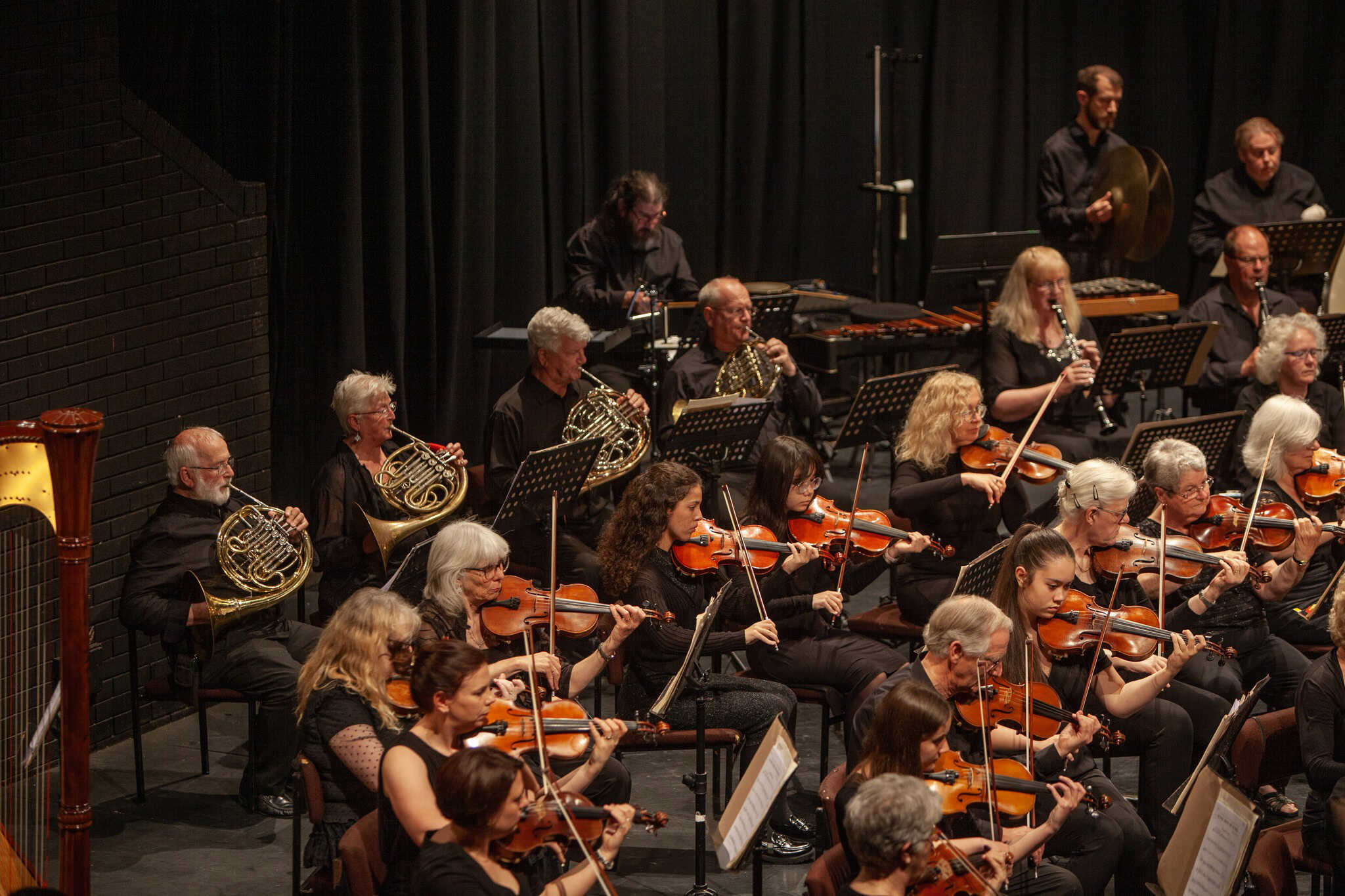
We could see the difficulty of the piece in the speed of the fingering. I am in awe of Mr Fornariuk’s ability to enunciate each note clearly and sharply, despite the great speed with which his fingers have to move. After the Introduction, several variations were performed, at various speeds and effects, and I shall definitely listen to these again. The orchestra plainly enjoyed working delicately and supportively with Mr Fornariuk, showing their pleasure and approval at the end, as did the audience. It was lovely, and I hope we get the chance to hear his playing again. Thank you.
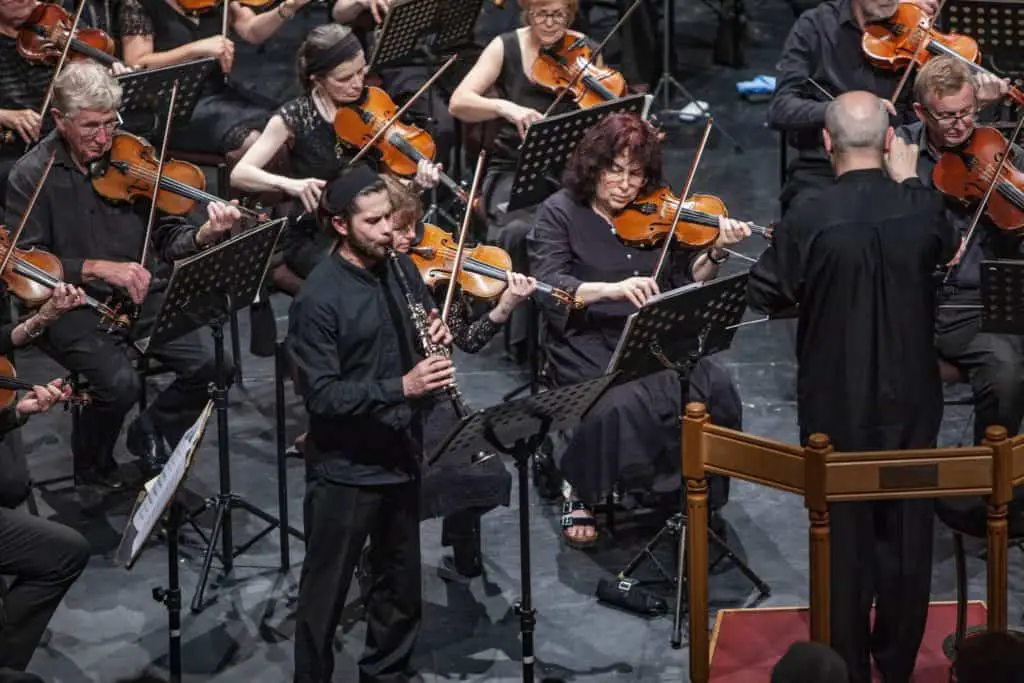
Delightful second symphony
Alexander Borodin moved in the same musical circle as Mussorgsky, but this symphony is very different to the Bare Mountain, although Rimsky-Korsakov was at hand to suggest a rewrite after the first performance in 1876 wasn’t a success either. The relaunch in 1879 went much better. It starts with a clear and vigorous theme, like a statement of intent, as if he was laying out his arguments. The second movement feels lighter and more lyrical and expansive, with some lovely passages.
The third movement is beautiful, calm and thoughtful, and full of lovely tunes, starting with a harp, clarinet and horn, and continues that way, with individual instruments taking up the lead, and the orchestra emphasising and filling out the sound. The fourth movement begins vigorously with a fine dancing tune filled with joyous energy and melodies. It becomes a celebratory anthem, as if the things that were on Borodin’s mind were discussed and sorted out, clearing his mind and leaving a feeling of joy and happiness in their wake. All through, the orchestra played with precision and fantastic teamwork, and almost unbearable concentration. Every concert is an event, and I, for one, hope to be returning ad infinitum.
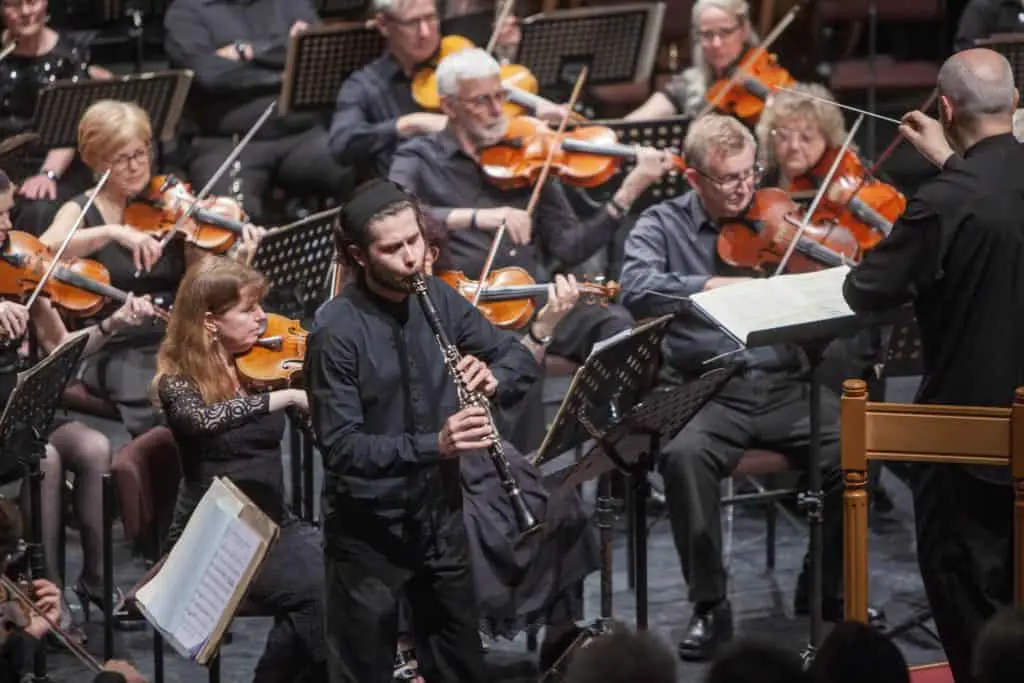
Thank you again B. Blumenthal for the excellent programme notes, without which I would be lost.
Next concert
The IWSO will return to the Medina Theatre on Saturday 6th July 2024 at 7:15pm at the Medina Theatre. It will be a marvellous and packed season finale, composed of the Fanfare from La Peri by Dukas, then a piece called Festivities by Douglas. Addinsell’s lovely Warsaw Concerto will follow, played by the marvellous Thomas Luke. That’ll be wonderful. I’m really looking forward to it.

Then it’s Dance of the Hours by Ponchielli, Orb and Sceptre by Walton, a thing called Three Card Trick Suite by Wedgewood, a Party Piece by Bennett, also played by Mr Luke, and finishing off with Billy the Kid by Copeland. What a treat!
Get your tickets ASAP, and I strongly recommend buying season tickets for the next season. It’s cheaper, and you’ll always know where your seats are. What’s not to like!
See you there!

